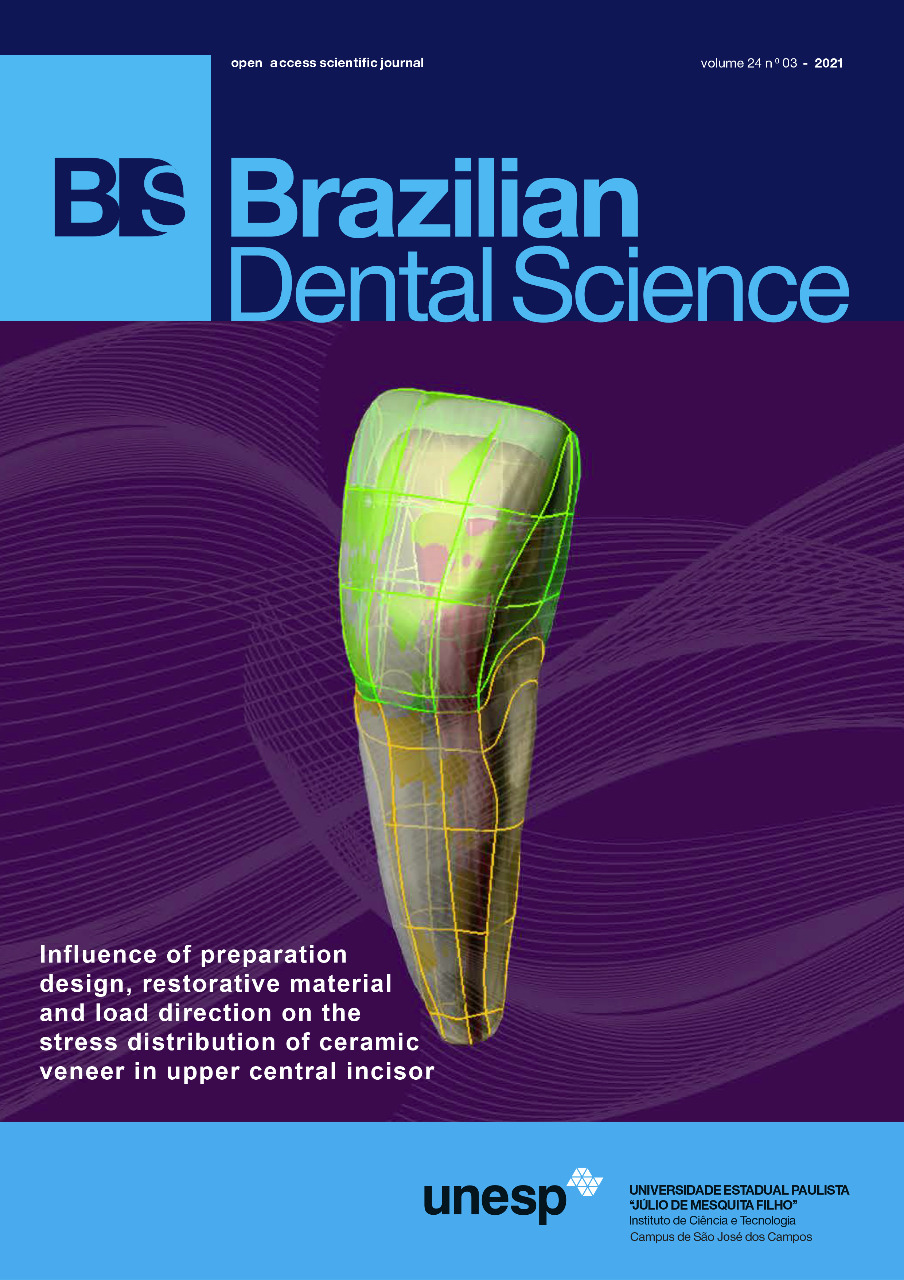One Year Clinical Evaluation of Milled BioHPP Polyetheretherketone (PEEK)-Based versus Metal Ceramic Single Crowns (Randomized Controlled Clinical Trial)
DOI:
https://doi.org/10.14295/bds.2021.v24i3.2518Abstract
Objective: To evaluate the clinical behavior of milled BioHPP PEEK copings veneered with Visio.lign composite resin in comparison with metal copings veneered with feldspathic porcelain as single posterior crowns. Material and Methods: Twenty Four full coverage posterior crowns were fabricated for endodontically treated molars divided into 2 groups according to the material used. Twelve milled BioHPP PEEK-based crowns (Group 1) and Twelve Porcelain Fused to Metal (PFM) crowns (Group 2). The preparations were standardized with an equi-gingival, deep chamfer finish line for all teeth. BioHPP PEEK and metal copings were fabricated by CAD/CAM technology and lost wax technique respectively. These coping were veneered according to manufactures instructions either by special composite resin or low fusing glass ceramic respectively. The restorations were cemented then clinical evaluation of these crowns was assessed regarding mechanical failure, marginal integrity and patient satisfaction every two months for one year. Results: Although two PEEK crowns were fractured, both PEEK and PFM crowns showed similar fracture (mechanical failure) and marginal integrity without significant difference (P > 0.05). BioHPP PEEK-based crowns showed statistically significantly lower patient satisfaction than PFM crowns after six months (P-value = 0.013, Effect size = 1.157) but all the patients were generally satisfied. Conclusion: BioHPP PEEK-based crowns showed clinically similar and accepted mechanical behavior and marginal integrity but less patient’s satisfaction than PFM crowns after six months. So BioHPP PEEK-based crowns may be used as an alternative tooth-colored metal-free fixed restoration for one year.
Keywords
BioHPP; Metal ceramic; Patient satisfaction; PEEK; PFM.
Downloads
Downloads
Published
How to Cite
Issue
Section
License
Brazilian Dental Science uses the Creative Commons (CC-BY 4.0) license, thus preserving the integrity of articles in an open access environment. The journal allows the author to retain publishing rights without restrictions.
=================




























